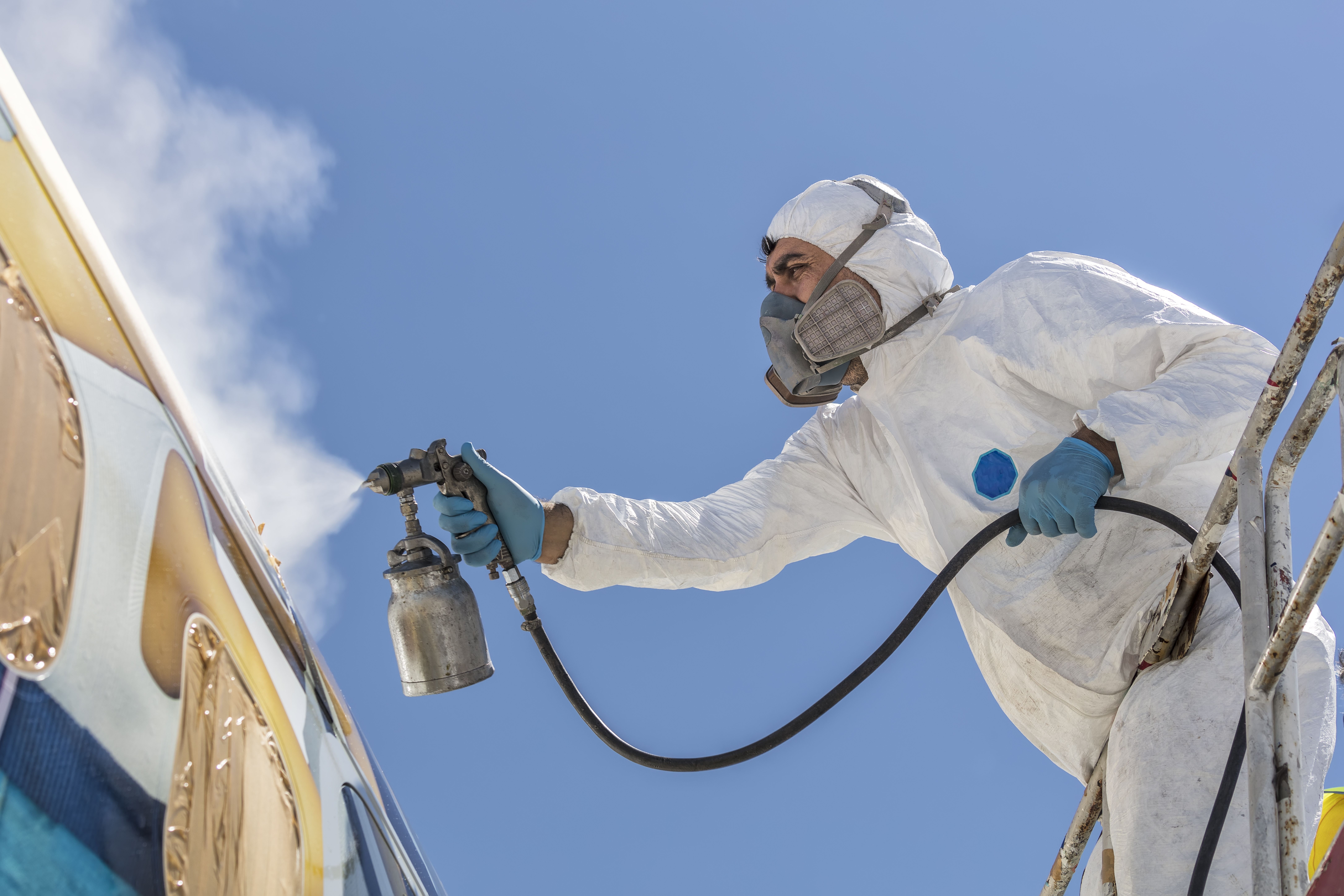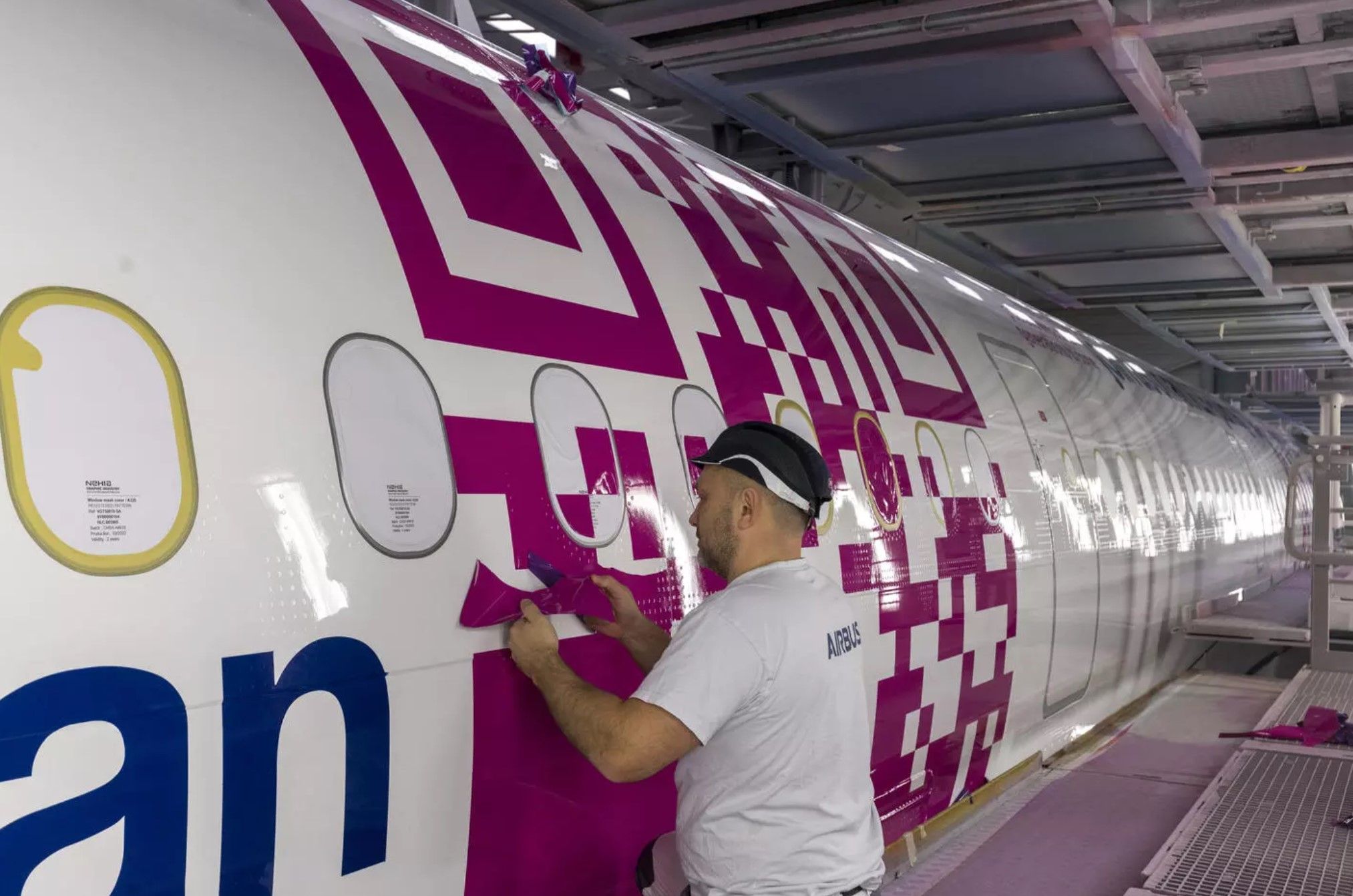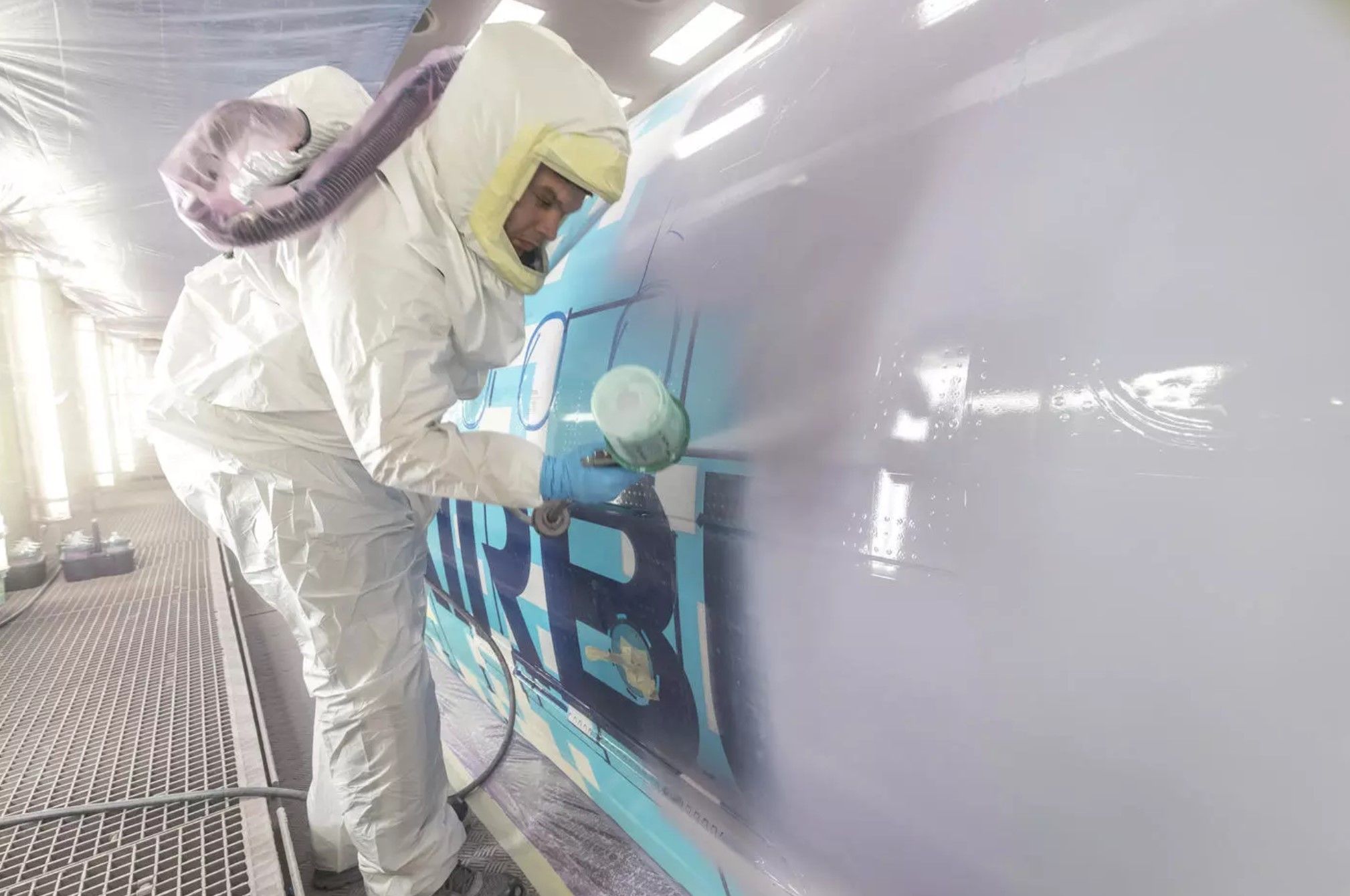Painting an aircraft is no easy task. The sheer size and complexity of an aircraft may require several hundred gallons of paint. Depending on the aircraft's size and the color scheme's intricacy, an aircraft paint job may take up to three weeks to complete. A low-pressure spray system allows for high volumes of paint to be dispersed onto the skin of the aircraft.
An aircraft paint job is typically completed in three steps, where a new layer of paint is applied in each step. The first layer is the primer, followed by the base coat, and the final is the top coat. Each layer of paint is typically one four thousandths of an inch (0.1 mm) thick. Depending on the color scheme of the livery, the paint is expected to add 600 to 1200 lbs (272 - 544 kg) to the aircraft's weight.
How much paint is required?
The amount of paint required for an aircraft depends on its size. A narrowbody aircraft such as the Airbus A320 or a Boeing 737 requires approximately 70 gallons (265 liters) of paint. A larger aircraft, such as the Boeing 777, requires 110 gallons (415 liters) of paint. The Airbus A380 superjumbo can require up to 950 gallons (3600 liters) of paint.
Want answers to more key questions in aviation? Check out the rest of our guides here.
Weight quantification of the paint
Like any other paint, the weight of the aircraft paint is quantified as solid weight. The weight of the paint is determined in terms of the number of pounds of paint per gallon (or kilograms per liter). This quantification makes it easier for the manufacturers to determine the volume of paint when applied to the aircraft.
Moreover, based on the viscosity of the paint, the applied volume can be used to determine the total weight of the paint. It is essential for the manufacturers to quantify the exact weight as it adds to the empty weight of the aircraft.
How much paint is wasted during application?
The aircraft paint job is typically performed using a High Volume Low Pressure (HVLP) paint sprayer, also known as a turbo sprayer. The HVLP sprayer allows very high volumes of paint to be deposited at a low pressure, which results in a more even coating on the skin of the aircraft. The HVLP spray is used in applications requiring a high-accuracy job with a smooth finish. While Low Volume High Pressure (LVHP) sprayers are more portable, they are not always ideal for the aircraft paint job.
The high-volume technique of the HVLP spray allows for more paint to be deposited on the aircraft than is required. Using an HVLP spray gun, the transfer efficiency of the gun is in the range of 50% to 60%. In other words, only 50 - 60% of the paint sprayed on the aircraft skin actually stays on the skin.
The rest of the paint is wasted during application. For example, if the weight of the solid paint is 5 lbs per gallon, only about 2.5 lbs of solid weight is deposited on the aircraft. The remainder of the paint falls to the ground during application. While spray booths are equipped to contain wasted paint, it may not be reused. The wasted paint is generally prone to attracting impurities in its path and may result in a poorer finish or faster wear if used.
What are your thoughts on the amount of paint wasted during an aircraft paint application? Tell us in the comments section.



